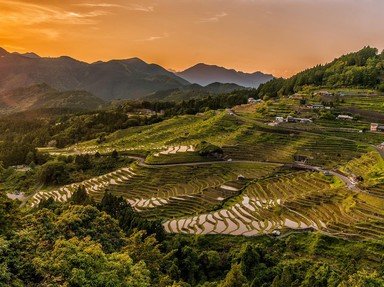Quiz Answer Key and Fun Facts
1. Live and let live I say but my time to live was running short. I'm James Blonde and my cover has just been blown. The note I had told me "to show" at one of the two Shinto shrines at The Shrines and Temples of Nikko. My contact was not at the Futarasan-jinja. That left me with one option, but which of the following is the one?
2. Never say ever... well my contact didn't say much at all... he never showed. Jimmy Blonde, you are on your own, I thought. A tour group hustled past with their guide declaring "never say kekko until you've seen Nikko". I blended in. It gave me the chance to hide and discover that which of the following best describes kekko?
3. As Jimmy Blonde, master spy, I felt that my best chance to stay anonymous was to remain hidden within the tour group. A side benefit was that I was treated to a view to a thrill. Try and uncover what I saw on Lake Chuzenji that is regarded as one of the "Eight Views that best show Japan"?
4. "Jimmy Blonde you fool" I admonished myself. I'd gotten careless. I spotted a man with a golden gun and I knew I was in trouble. A soft but urgent voice behind me said "Jomokogan station, the Shinkansen. Go"! I didn't get to see the contact (he is a she) but I did get a whiff of Shiso Verte. I knew what shiso was but what the heck is a Shinkansen?
5. The ride gave me, Jimmy Blonde (master spy), a quantity of solace. With my mind straight I knew I had to head for Niigata. As I stared out of the window I could see the produce that had made this prefecture famous and they looked like having a cracker of year. What was I staring at?
6. There was a recording left for me at the Niigata Rice Cracker Museum. "For your ears only Mr. Blonde" it said "see you at Sado Island". This sent chills down my spine as I knew that Sado, in the eighth century, was know for which punishment, second only to death in Japan?
7. My instructions said "Jimmy Blonde, go to Chokokuji Temple's guardian, you can't miss me". I now stood before a giant rabbit statue with the property of a goddess on its chest and an ironic note in my hand. "Please forgive me" it said as I gazed upon the face of Kannon, the goddess of (what)?
8. It seemed that my contact was the spy who loved sake. Despite her inebriated state she managed to send me my next tip, just three words... "Jimmy Blonde, Shukunegi". When I got there, it scared the living floodlights out of me, for I had arrived at a (what)?
9. "I see you Mr. Blonde". The only person I could see was not, unsurprisingly, my contact but General Gun. I bolted and managed to find refuge in a building conducting Japan's oldest surviving theatre form. It had which name, that sounded very similar to a character created by Ian Fleming?
10. Sitting in the theatre I, once again, caught the scent of shiso. My contact whispered from behind me "Ishina, see the forest. Hurry Mr. Blonde, you only live once". A helicopter (surprisingly) was waiting for me at the site but I'd misheard my contact, for I'd also found an ancient forest full of which trees?
Source: Author
pollucci19
This quiz was reviewed by FunTrivia editor
agony before going online.
Any errors found in FunTrivia content are routinely corrected through our feedback system.
